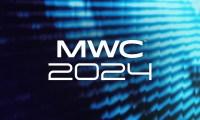Haptics, the name of the buzzing vibration alerts we have in our smartwatches, could be much more exciting, engaging, and fun — If only hardware manufacturers would make the best use of the tech. Immersion, one of the leading companies producing haptic technology, gave us a demonstration of what could be possible if haptic feedback was pushed beyond a slightly dull buzz on our wrists when an email arrives.
To start, those annoying alerts could get much less irritating, and far more helpful. Immersion showed how haptics could be tailored to the app that’s sending the notification, which would make alerts more informative, and lessen the need to look at your wrist for every generic buzz. We’ve seen something like this before on the Martian Notifier smartwatch, but this goes a step further, because it’s not all about memorizing Morse code-style patterns.
Instead, the vibrate could mimic a ringing phone on your wrist, or provide subtle prods based on the importance of a message. A text message from one of your favorite contacts? That would get a forceful alert, but an email over the weekend may get a swift vibrate just to let you know it’s there, but it’s not really worth investigating further. The system it uses to categorize the alert types is easy to understand, with options like Know This, Review This, and Do This available.
It all sounds so simple, yet it’s not being built right into our devices.
Haptics aren’t only about notifications either. Immersion adds feedback to give another dimension to weather reports, so you can feel the pitter patter of raindrops, or a clap of thunder. The technology can even mimic the tick of the second hand on your watch face. Thankfully, this would only activate when the screen was in use, otherwise it risked becoming the tech equivalent of the Tell-Tale Heart.
Better still, video is being upgraded to include special haptic effects, which work a little like rumble packs on game console controllers. We saw a video of a roller coaster ride, which highlights how much well-used haptics can add to the mobile video experience. You can give it a try yourself using Immersion’s special Android app.
Immersion is also interested in using the technology to make shareable stickers and mini drawings more fun. In a similar way to Apple’s Digital Touch feature, which is about to debut on the Apple Watch, Immersion wants these new ways of communicating to make two people feel closer and better connected, no matter if they are far apart.
The company works with many of the largest mobile manufacturers in the world, so chances are if it buzzes, it’s Immersion’s tech doing it, and these features were demonstrated to us on a Samsung Gear S. However, haptic feedback is viewed as a secondary feature and rarely used outside of those bland alerts we’re all used to receiving. Immersion wants this to change, and make those rumbles on our wrists (and in our pockets) much more informative and interactive. After seeing, or rather feeling, what’s possible, we hope it succeeds.





